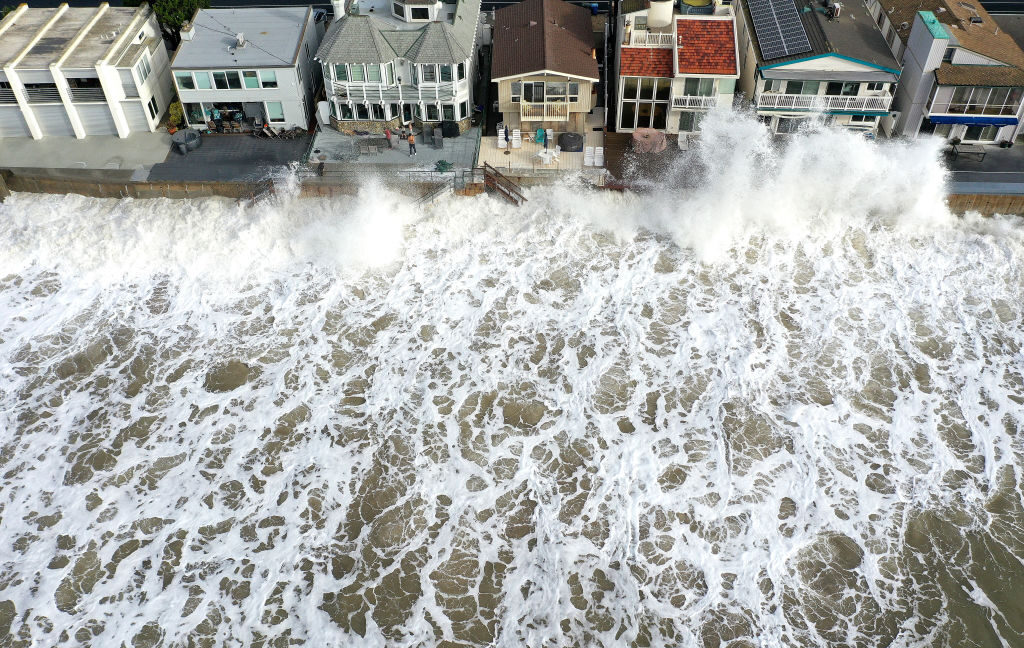On Thursday, the United Nations' Environmental Programme (UNEP) released a report on what it terms the "emissions gap"—the difference between where we're heading and where we'd need to be to achieve the goals set out in the Paris Agreement. It makes for some pretty grim reading. Given last year's greenhouse gas emissions, we can afford fewer than four similar years before we would exceed the total emissions compatible with limiting the planet's warming to 1.5° C above pre-industrial conditions. Following existing policies out to the turn of the century would leave us facing over 3° C of warming.
The report ascribes this situation to two distinct emissions gaps: between the goals of the Paris Agreement and what countries have pledged to do and between their pledges and the policies they've actually put in place. There are some reasons to think that rapid progress could be made—the six largest greenhouse gas emitters accounted for nearly two-thirds of the global emissions, so it wouldn't take many policy changes to make a big difference. And the report suggests increased deployment of wind and solar could handle over a quarter of the needed emissions reductions.
But so far, progress has been far too limited to cut into global emissions.
The ABCs of NDCs
The Paris Agreement is built around Nationally Determined Contributions, or NDCs. These contributions come in the form of reduced emissions of greenhouse gases, and each country that's part of the agreement is supposed to set NDCs that will help get us to two targets: keeping warming less than 2° C to avoid some of the worst consequences of climate change and a preferred goal of limiting warming to 1.5° C, which will have even greater benefits.
While the initial NDCs were expected to be insufficient to reach these goals, parties to the Paris Agreement were expected to periodically update them in light of developments both in that particular country and in sustainable technology more generally. Each country is also expected to set policies that will position it to meet its pledges.
The last wrinkle in NDCs is that they can come in two flavors. Wealthy nations like the US or the EU can be expected to handle the costs of adopting the technologies that limit greenhouse gas emissions, like renewable power and electric vehicles. For a lot of the Global South, this will require major changes that are difficult to afford. So many companies submit two NDCs: unconditional, which they expect to achieve on their own; and conditional, which can be achieved if some outside funding is also supplied.
The UNEP report, then, can analyze where emissions are, how those emissions compare with NDCs, and whether policies have been set that will achieve the NDCs in the first place. And all of that can be placed in the key context: Will things get us to the 1.5° C and 2.0° C goals.
Falling short
Right now, the answer is no. To have a reasonable shot at limiting warming to 1.5° C by the end of the century, carbon emissions would have needed to start dropping by now, on their way to the planet being net-zero by mid-century. Instead, emissions are still rising. UMEP says that the 2023 greenhouse gas emissions reached the equivalent of 57 Gigatonnes of carbon dioxide, a new record and a 1.3 percent increase compared to 2022.
One way to look at how problematic this is would be to think in terms of a carbon budget. We can estimate how much carbon can be put into the atmosphere before warming reaches 1.5° C. Subtract the emissions we've already added, and you get the remaining budget. At this point, the remaining budget for 1.5° C is only 200 Gigatonnes, which means another four years like 2023 will leave us well beyond our budget. For the 2° C budget, we've got less than 20 years like 2023 before we go past.
An alternate way to look at the challenge is to consider the emissions reductions that would get us on track. UNEP uses 2019 emissions as a baseline (about 52 Gigatonnes) and determined that, in 2030, we'd need to have emissions cut by 28 percent to get onto the 2° C target, and by 42 percent to be on track for the 1.5° C target.
The NDCs are nowhere close to that, with even the conditional pledges being sufficient to only cut emissions by 10 percent. Ideally, that should be prompting participating nations to be rapidly updating their NDCs to get them better aligned with our stated goals. And, while 90 percent have done so since the signing of the Paris Agreement, only a single country has made updated pledges over the past year.
Countries are also failing to keep their national policies in line with their NDCs. The UNEP report estimates that current policies allow the world collectively to emit two Gigatonnes more than their pledges would see being released.
A limited number of countries are responsible for the huge gap between where we need to go and what we're actually doing. Nearly two-thirds of 2023's emissions come from just six countries: China, the US, India, the EU, Russia, and Brazil. By contrast, the 55 nations of the African Union are only producing about 6 percent of the global emissions. Obviously, this means that any actions taken by these six entities will have a disproportionate effect on future emissions. The good news is that at least two of those, the EU and US, saw emissions drop over the year prior (by 7.5 percent in the EU, and 1.4 percent in the US), while Brazil remained largely unchanged.
The report notes that we already have the technologies needed to close the gap, and they're economical. It suggests that rapid deployment of wind and solar power could cover over a third of the gap between expected emissions and getting a trajectory that will see us at net-zero by mid-century.
What’s to come?
UNEP emphasizes that delays in meeting and tightening pledges don't just mean a few years of problematic emissions. "Inaction reduces the chance of bridging the emissions gap in 2030 because of continued lock-in of carbon-intensive infrastructure," the report argues. Given the typical lifespans of infrastructure projects, which typically run into multiple decades, this risk extends well past 2030.
All of this means that it's nearly impossible for the world to stick to the target of keeping warming below 1.5° C. But there's a world of difference between missing that target and simply coasting along at our current pace. Based on current policies alone, the report estimates that we'd likely end up with a world that's warmed by 3.1° C by the end of the century. Actually meeting our unconditional pledges would leave us with 2.8° C. And, in both those cases, the world won't have reached net zero by this point, meaning warming would continue well into the following century.
Recent events should serve as a reminder that every bit of warming comes with a cost in terms of lives lost and property destroyed. Experts who study this area are widely in agreement that failure to meet any particular goal should increase the urgency of efforts to limit how badly we overshoot.


